It looks like you're using an Ad Blocker.
Please white-list or disable AboveTopSecret.com in your ad-blocking tool.
Thank you.
Some features of ATS will be disabled while you continue to use an ad-blocker.
Wrongly Demonized - Promoters of Goodness & Freedom - Knights Templar, Freemasonry, & Illuminati
page: 1Wrongly Demonized! Promoters of Goodness & Freedom: Knights Templar, Freemasonry, & Illuminati
The Knights Templars, Freemasonry, and the former-Illuminati have always been in pursuit of all things good and virtuous. The Knights Templars promoted chivalry and fought to protect the weak, Freemasonry aims to guide a good person into making themselves better, and the former-Illuminati sought to cultivate collective societal happiness.
Though completely extrinsic, separate, and independent of each other, these groups heavily revolve around upright morals and ethics, positive mental and emotional states, as well as virtues and qualities such as Equality, Liberty, Freedom, Justice, and Truth.
The Knights Templars, Freemasonry, and the former-Illuminati have been demonized and imagined as wicked, even though they have worked to free and uplift the common man. In fact, many of the groundbreaking rights, privileges, and luxuries of our modern era came to fruition from the very soil toiled by these Societies.
Outline
I. Old World Order of the Kings and Priests
II. Ancient Knowledge and the Mysteries
III. Dark Ages
IV. Innocence of the Templars
V. Hope For Humanity: Renaissance, Science, Discovery
VI. Enlightenment
VII. Revolution: Novus Ordo Seclorum (New Order of the Ages)
VIII. Order of Illuminati
IX. Light
X. New World Order
XI. TL;DR (Too Long; Didn't Read)
I. Old World Order of the Kings and Priests
In the beginning, primeval man sought safety from danger through the strength of numbers. As infantile man herded together, naturally, alpha figures arose. These alpha figures became leaders, and the herds of mankind became distinct clans and tribes. From within these tribal communities arose the cunning warriors and warlords who would eventually establish kingdoms, empires, and the Royal Caste.

With the relative safety offered by the defenders of the realm, individuals gained the luxury of leisurely rationalization, contemplation, and reflection. This, in turn, allowed the mind to grow in knowledge, understanding, and reasoning. With these tools of the intellect, the mind became fertile with the seeds of ideation, imagination, and speculation, from hence sprouted creativity and ingenuity. It was from the limbs of creative-genius that the plentiful fruits of invention and ideology blossomed. These intellectual philosophers grew to become the natural, psychological, and metaphysical scientists who initiated and generated the Priestly Caste.

To varying degrees of cooperation, the Royals and the Priests ruled over mankind for millennia. The monarchs and priests, realizing that a great deal of power lies in knowledge, thus began the suppression of information and established the original "Intellectual Dark Age" of the common people (plebeians/proletariats). This information monopoly was used by the monarchs to subjugate, appease, and expand their domain, while the priests cemented their own eminence by using their knowledge to amaze, bedazzle, and mystify the people into ideological submission. This coalition between the Royals and the Priests typifies the "Old World Order" (O.W.O.).
During the O.W.O., ignorance, superstition, and fear were wide-spread. Illiteracy was high among the common people, while temple scribes and nobles wielded the pen. The majority of the common person's knowledge was confined and compartmentalized to that of their direct experiences and immediate avenues of working, earning a living, and surviving in life. Fortunate commoners found relief through the crafts and trades, while higher education was reserved for the wealthy, the nobility, royalty, and the priesthoods.
The Old World Order's culture of restrictive learning, led to the development of various caste and social classes throughout the world. The unlearned and underprivileged common people were forced to grovel at the feet of the upper-class Nobility, and kneel before the Royals and Priests.
II. Ancient Knowledge and the Mysteries
Throughout place and culture, we have excellent examples of advanced knowledge associated with the ancient religious Priesthoods. Furthermore, we can map out a clear progression of the attainment of this knowledge, therefore, dispelling the mystery and mystique.
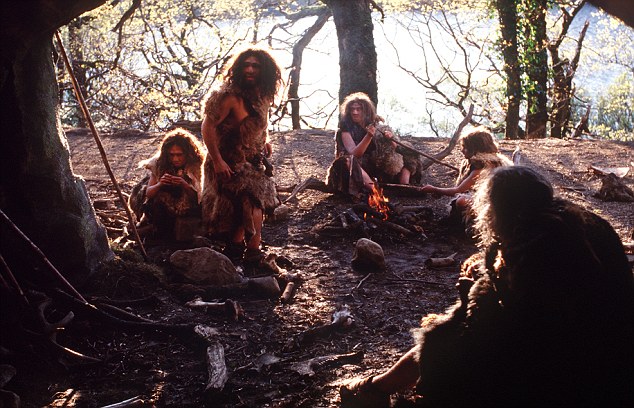
Just as with all creatures of this world, mankind was a subject victim to the whims of nature. Each day, man would go about his regular routine of satisfying the basic necessities of his primitive existence and survival. When darkness appeared, he was blinded and limited, seeking the safety of trees, caves, and rudimentary shelters.

The Sun serves as our planet's primary source of sustenance and preservation. It displaces the uncertainty and danger of darkness, it causes the plants and trees to grow, it warms our skin, and it gives illuminating light to the world. With so much depending on its radiance, the Sun came to be viewed and worshipped as the Most High God. The fundamental worship of the Sun can be found throughout the cultures of our prehistoric and ancient past, with remnants of Sun worship existing to this day.

Being held to the mercy of the elements, man lived a great deal of his life in uncertainty. His life expectancy was short, as mortal danger awaited him at every turn. In order to strengthen the prospects of his own survival, a high birth rate was vital, not only to expand the tribe, but also to secure man's survival into the future. When food became scarce, he followed the foodstuff animals and journeyed to growths of edible vegetation. Man realized that his very survival was dependent upon the continued and sustained birth of his offspring, the birth of new animals, and the birth of new plants. With this realization, fertility, procreation, and birth came to be held in high esteem. These qualities came to be symbolized, revered, and worshipped in the form of the ancient Mother Goddess, who can be found throughout the world.

Perhaps the most transformative of early man's accomplishments was the creation and utilization of Fire. Today, we may take our lightbulbs and lighters for granted, but in our ancient past, fire revolutionized everything. For the first time among the animal kingdom, fire was used to stave off darkness and the cold. Man could now sustain warmth, travel by night, illuminate the depths of caves, and use it as a tool to prepare food, glues, and other materials. As many creatures have an intrinsic fear of fire, the flame of a torch also became a powerful weapon and deterrent against dangerous animals and nocturnal predators. With so many benefits gained by fire, it too became an object of worship. It came to be seen as a fragmentary ember of the Sun and as an emanate emissary of God's Light. As it took man's ingenuity to tame it, bringing great creative benefit thereafter, fire also came to be symbolic for the mind and intellect.

When tides inexplicably changed,... when water sources suddenly flooded or dried out,... when growing seasons unexpectedly ended,... and when climates mysteriously became unbearable,... man migrated to and fro just as the other animals. After generations of subsistence roaming, man came to notice that all things follow particular patterns and cycles, including the movements of the Sun, Moon, Planets, and Stars. Stones and markers were placed to track the Sun during the day and throughout the year, and the phases of the Moon were observed and documented each night. With further observation, it came to be understood that the Moon was related to the changing tides and the crashing of waves, and that the Sun held command over the climatic seasons, the vegetative growth cycles, and the reproductive cycles of the animals. From these observations and conclusions, man began the work of aligning rocks, monoliths, and monuments to the Solstices, Equinoxes, and significant star formations, all to aid in forecasting the cyclical changes of nature. This ancient practice is known as archeoastronomy and astrolatry.

For the first time in history, man stepped away from the instinctual responses of living moment to moment, and stepped into the intellectual understanding of time. Sundials and calendars were created to account for the cycles of both the Sun and Moon. With an increased understanding of time, man was better able to plan his labors and undertakings, anticipate the seasonal changes, and predict the reproductive and growth cycles of the plants and animals. In ancient Greece, Time was deified and anthropomorphized as the God Chronos.

With a combined understanding of time and the mechanics of natural propagation, man went on to lay one of the major foundation stones of civilization; agriculture. Man began to domesticate certain plants and animals, and their reproduction became measured and organized. With the scientific advent of agriculture, religious ceremonies and rituals were developed to mark and commemorate the seasons for mating, suckling, slaughtering, sowing, planting, reaping, and harvesting. During this period of development, many gods and deities took on fertility, reproductive, agrarian, and agricultural qualities.

As man began to mature under knowledge, culture, and civilization, he began to perceive a deepening separation between himself and the animal kingdom. This distinction led man to view himself as having a dualistic nature;
• Civilized & Barbaric
• Higher-Self & Animalistic
• Spiritual & Material
• God & Man

These key realizations and innovations unleashed a cascade of further developments. The use of fire led to the sciences of pottery, ceramics, brick making, smelting, casting, forging, and metallurgy. The establishment of long-term settlements and cities was made possible through political/military strength, cultural/religious cohesion, the ability to forecast cyclical & seasonal changes, and the development of agriculture. Agriculture lead to the understandings of biology, anatomy, and hereditary genetics. The growth of territorial domains, the spread of religious ideas, and the evolution of trade and economic markets brought about the necessity for formalized mathematical and writing systems.

The science of Chemistry came about as man began to take note of the effects and qualities of particular plants, natural substances, and elements. Ingredients were combined and processed into mixtures, solutions, and compounds to treat illness and injury, to bring about alternate states of consciousness, and for the benefit of further technology and invention. Early chemists were known as Medicine Men, Witch Doctors, Magicians, and eventually, Alchemists.

The stability and longevity of these cultural centers served as fertile soil for the advancement of the science of architecture. The Ancient Builders, those who discovered the secrets of physics and advanced mathematics, showcased the mastery of their craft through the design, execution, and construction of the great temples and monuments of Priesthoods, Cults, and Religions around the world. Ancient monuments all over the world embody beautiful proportions, precision of measurement, accuracy of alignment, and a conscious application of applied physics.
[In order to monopolize on scientific knowledge, the priests created exoteric religious stories (Lesser Mysteries) to conceal the underlying esoteric sciences (Greater Mysteries), while drawing the uninitiated into awe and devotion. Each additional piece of scientific insight or technological achievement was veiled by an outer worship.]

Cave of the Trois-Frères (approx., 13,000-BCE)
[Cro-Magnon art sites] were ritual shrines, not only for local groups, but for people from far wider areas, too. Other locations were sacred places used occasionally for major ceremonies. These are illustrated dramatically by Le Tuc d'Audoubert Cave in Ariège, France, where two carefully modeled clay bison lie in a remote, low-ceilinged chamber far from the entrance...... Ancient human heel marks can be seen around the figures in this remote and dark chamber..... There are several instances in which the footprints of both adults and children are preserved in damp clay, perhaps left by small parties of initiates who attended ceremonies in remote subterranean chambers.
Today, we know a great deal more about symbolic behavior and the art that goes with it..... Shamans, priests or spirit mediums are important members of forager and subsistence farming societies all over the world..... Perhaps, argue some experts, much of the cave art was involved with shamanistic rituals, the animal figures being images of spirit creatures or the life force for the shamans.
Some of the art may also have been associated with initiation rites, the journey through dark passages adding to the disorienting ordeal of initiation. Almost certainly, the art was a way of transmitting environmental and other knowledge from one generation to the next.
World Prehistory, A Brief Introduction
Brian M. Fagan

Traditional African Religion
Initiation in African Traditional Religion
Initiation Rites and Rituals in African Cosmology
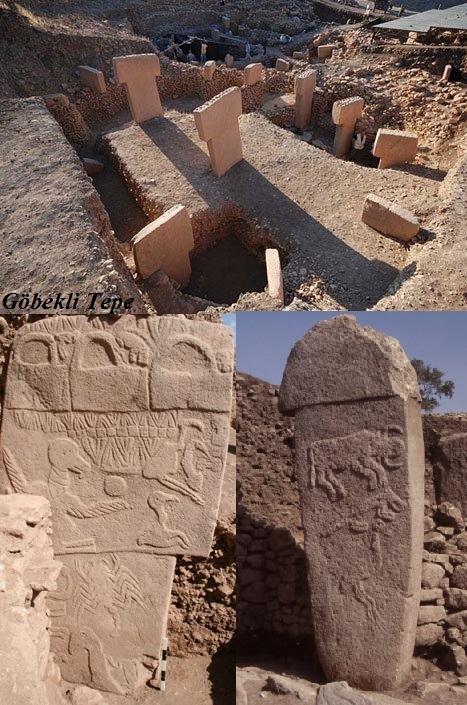
Cult of Göbekli Tepe (approx., 9,500 - 8,000-BCE)

Sumerian Religion (approx.,3,500-BCE)

Indus Valley Civilization (approx., 3,300 - 1300-BCE)

Stonehenge (approx., 3,000 - 2,000-BCE)

Druids (origin unknown. Although much older, first classical reference around 300-BCE, first documented reference 50 - 40-BCE.)
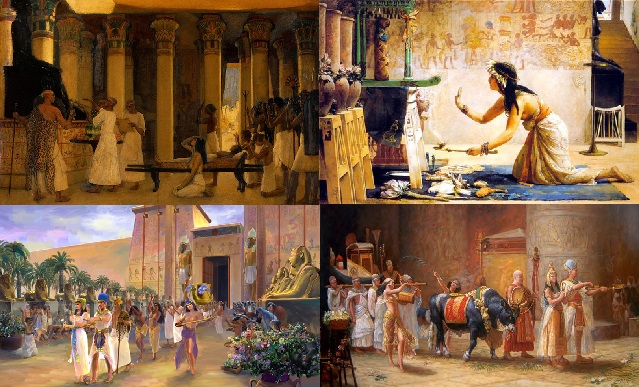
Egyptian Cults (approx., 3,000-BCE)

Vedas (approx., 1,500-BCE)

Israelite Priesthood (Legendary; approx.., 1,500 – 1,200-BCE)

Dionysian Mysteries (approx., 1,500-BCE)

Eleusinian Mysteries (approx., 1,500-BCE)

Olmec (approx., 1,500-BCE)

Zarathustra (born approx., 1,500 - 650-BCE)

Zoroastrianism (approx., 500-BCE)

Adena Culture (approx., 1,000 - 100-BCE)

Maya Civilization (approx., 1,000 - 700-BCE)

Orphic Mysteries (approx., 600 - 400-BCE)

Pythagoreanism (approx., 500 - 400-BCE)

Cult of Cybele (approx., 600 - 200-BCE)
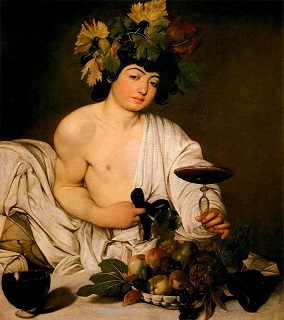
Bacchic Mysteries (approx., 300 - 200-BCE)

Mithraic Mysteries (approx., 200-BCE - 100-CE)
The ground-breaking work of Ctesibius, Archimedes, Philo of Byzantium, and Heron of Alexandria was incorporated into religious affairs to impress the worshippers 1, 2.
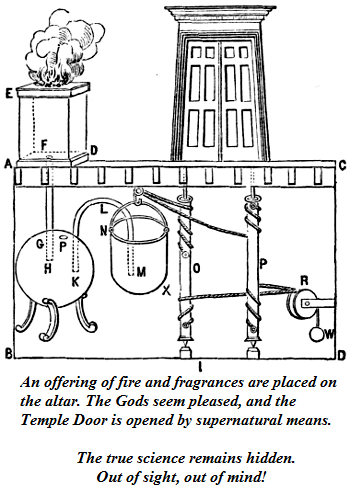
Through the utilization of water hydraulics, air/gas pneumatics, steam power, mechanics, mathematics, and physics, many temple wonders were engineered. Temple doors opened and closed by mysterious forces, clocks inexplicably kept perpetual time, inanimate statues and objects seemed to come alive and move without clear explanation,, while sounds and music miraculously manifested out of thin air.
The undereducated masses were wowed and wooed by the prediction of planetary and stellar positions, Solar and Lunar eclipses, and by the forecasting of various cycles and seasons. The benighted people were spellbound by the miraculous cures and astonishing chemical reactions conjured by the early chemists.
III. Dark Ages
The spread of common knowledge and the rise of Christianity led to the demise of temple technology. Jesus embodied not only miracles, but the Divine itself. Parlor tricks and theatrics were no longer needed to win-over religious adherents, because Christians simply relied upon their own faith and belief. As the general populace grew accustomed to new innovations, the progression and advancement of technology had a demystifying effect; magic was replaced by knowledge.

The collapse of the Roman Empire, coupled with the theocratic empowerment of Authoritarian Christian Institutions, ushered in the Dark Ages of the European Migration Period. This era was marked by the great "Barbarian Invasions" of the Roman Empire, which forever changed the traditional urban Roman culture of the provinces.
In ancient times, advanced knowledge was delicately veiled and hidden in mythology and allegory for the safekeeping of the Initiates. However controversially, as Theocratic Christianity grew in numbers, strength, and influence, the Christian Priesthood took a more oppressive stance to keep back knowledge from the masses. The religion was monopolized by the Christian Priesthood through their use of a Dead/Extinct liturgical language (Latin), by the high illiteracy rates of the common people, and due to the costly expense of handwritten scriptures. Organized, independent, and spontaneous inquisitions and trials were launched to oppose contrary or dissenting thought. Astronomers, chemists, scientists, researchers, and philosophers were wrongly persecuted as heretics, sorcerers, witches, Satanists, and Demonists.

From the Fourth Century forward, the growth and spread of Christianity, and later Islam, caused the ancient Mystery Schools to decline, recede, and all but expire. For the next several centuries, Abrahamic Monotheism became the public religion and rule of the land from Western Europe to India. Christianity and Islam converted, marginalized, oppressed, and suppressed the ancient belief systems into extinction, but there are rumors and speculations that these groups continued on in carefully secretive concealment.
Newly formed secret societies arose from within the very culture of Abrahamic Monotheistic rule. The Knights Hospitaller, the Knights Templar, and Teutonic Order originated from Christianity, while Islam birthed various Tariqa (Sufi Orders) and the infamous Hashashin (Assassins). These secretive Orders helped to create order and justice from the chaos and vacuum wrought by the conquests of Abrahamic Monotheism.

The Knightly Orders of Christianity helped to protect religious pilgrims during the Crusades, secure and transport financial assets, and developed a high level of moral and ethical conduct through the various codes of chivalry, as seen in the Latin Rule of the Knights Templars. The English Grand Master of the Templars, Aymeric de St. Maur, helped to persuade King John to sign the Magna Carta, and is even mentioned in its Preamble:
"John, by the grace of God, king of England, lord of Ireland, duke of Normandy and Aquitaine, count of Anjou, to the archbishops, bishops, abbots, earls, barons, justiciars, foresters, sheriffs, stewards, servants and all his officials and faithful subjects' greeting. Know that we, out of reverence for God and for the salvation of our soul and those of all our ancestors and heirs, for the Honour of God and the advancement of Holy Church and the reform of our Kingdom, on the advice of our reverend fathers, Stephen archbishop of Canterbury, primate of all England and cardinal of the Holy Roman Church, Henry archbishop of Dublin, William of London, Peter of Winchester, Jocelyn of Bath and Glastonbury, Hugh of Lincoln, Walter of Worcester, William of Coventry and Benedict of Rochester bishops, of Mater Pandulf subdeacon and member of the household of the lord pope, of brother Aimeric master of the Knights of the Temple in England and of the noblemen William the Marshal earl of Pembroke, William earl of Salisbury, William earl of Warenne, William earl of Arundle, Alan of Galloway constable of Scotland, Warin son of Gerild, Peter son of Herbert, Hubert de Burgh seneschal of Poitou, Hugh de Neville, Matthew son of Herbert, Thomas Basset, Alan Basset, Philip d'Aubigny, Robert of Ropsley, John Marshal, John son of Hugh and others, our faithful subjects."

Grand Master of the Hashashin, Hassan-i Sabbah was a genius and polymath. He instructed his students in religious affairs, and passed on knowledge of psychology, mathematics, alchemy, and astronomy to his devout followers. The precise political assassinations allegedly carried out by the Order of Assassins influenced the political landscape of Western Asia during their time.
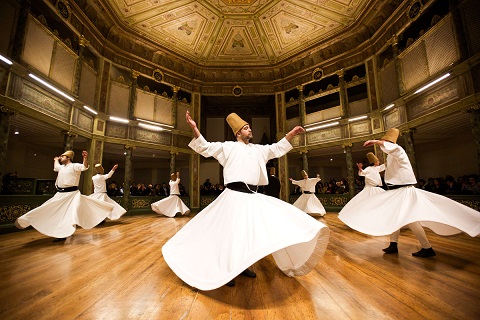
The various Sufi Orders instructed a highly esoteric discipline. Followers were guided along a mystical path of enlightenment through codes of conduct, philosophy, metaphysics, meditations, chants, and prayers. The great Jalal ad-Din Muhammad Balkhi, more popularly known as Rumi, was a Past Master of Sufism, who left behind a legacy of beautiful poems, philosophic & religious writings, and through his legacy; the Mevlevi Order of the "Whirling Dervishes".
IV. Innocence of the Templars
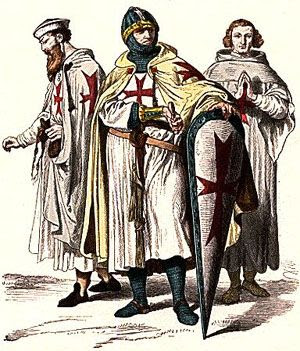
It is now a matter of historic fact that the original Knights Templars were unjustly persecuted. King Philip IV of France amassed a great deal of debt with the Knights Templars, and sought treachery to rid himself of his financial troubles.

Philip had acquired for himself a very powerful ally through the Papacy, for the King helped lobby and support the election of his childhood friend, Raymond Bertrand de Got, who, on June 5, 1305, was elected head of the Catholic Church, being coronated on November 14, 1305, as Pope Clement V. The Papal Court was then moved from Rome to Avignon France, marking the Avignon Papacy, which greatly strengthened the power of the French Monarchy. This relationship is exemplary of the Old World Order's method of governance.

In his contrivance to avoid his massive debts, King Philip IV expelled the Jews from France in 1306, and assumed their loans and financial assets.
By the same financial motivation, Philip then attacked the Templars with false accusations of sodomy, usury, and heresy, among others. With Pope Clement V's reluctant approval, King Philip launched an inquisition against the Knights Templars on Friday the 13th, October 1307, arresting hundreds of Knights. Under cruel and extreme torture, some Templars were forced to agree to various fabricated charges. There was a serious lack of consistency in the confessions, and none of the coerced statements corroborated one another. Furthermore, Templars that did give confessions under torture quickly recanted their statements once released.
To the pleasure of Philip's campaign, in 1312, Pope Clement officially proclaimed that the Knights Templars were to be disbanded and outlawed. Templar assets were seized and given over to the Knights Hospitaller, with a number of Templar Knights also joining the Hospitallers.
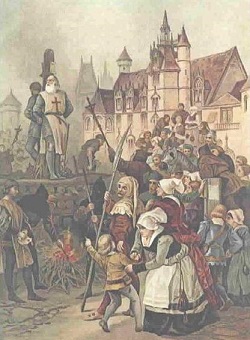
Other Templars were not as fortunate, with many being charged and tried for fallacious crimes, such as Grand Master, Jacques de Molay, and Geoffrey de Charney, Preceptor of Normandy, who were both executed by being burned at the stake on March 18, 1314. The convicted Templars proclaimed their innocence before meeting their unfortunate ends. Coincidentally or as a divine act of retribution and justice, nonetheless ironic, Pope Clement died one month later, followed by the death of King Philip in November of the same year.
The destruction of the Templars and the execution of their Knights laid heavily upon the conscience of Pope Clement V. According to the Chinon Parchments, Pope Clement actually absolved the Knights Templars of all crimes and wrongdoings, acknowledging them to be in good standing with the Church.
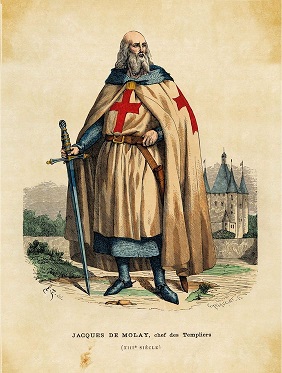
We must cease the narratives that paint the Templars as wicked, which rely on the inquisitions of King Philip IV as proof. The allegations of homosexuality, spitting on crosses, worshipping idols, revering decapitated heads, and paying homage to Baphomet are all false allegations created by the dishonesty of Philip IV, supported by his puppet Pope Clement V, and perpetuated by ill-informed conspiracy theorists.
The Knights Templars were just and innocent.
V. Hope for Humanity: Renaissance, Science, & Discovery
After the dust of the Middle Ages settled, people began to reexplore and rediscover the arts, sciences, and knowledge of the Classical Age. This expedition through history reawakened the creative spark within man, enthusiastically bringing about the Renaissance and its Humanism. The guilds, craftsmen, and stonemasons were once again called upon,... poetry, sculpture, painting, music, and philosophic thought was reinvigorated,... and the old masters of mathematics and science were reexamined and studied.

Medici Family
From 1169 - 1737-CE, the Medici Family helped to herald the Renaissance. Rising to prominence through the wool guild and banking, the Medicis grew to dominate Italian politics, funded major architectural and artistic endeavors, sired three popes, and were elevated to nobility and royalty.

Filippo Brunelleschi
(1377 – April 15, 1446) Credited as the first modern engineer, Brunelleschi successfully completed the infeasible dome of the Florence Cathedral, and developed the one-point linear perspective of artistry.

Leon Battista Alberti
(February 14, 1404 – April 25, 1472) Hailed as a founder of Renaissance art and architecture, Alberti composed the groundbreaking works; De Pictura and De Re Aedificatoria.

Leonardo da Vinci
(April 15, 1452 – May 2, 1519) Italian genius and polymath, Leonardo was, perhaps, the single greatest figure of the Renaissance. He was a Master visionary, inventor, architect, painter, sculptor, and all-around intellectual.

Michelangelo
(March 6, 1475 – February 18, 1564)
Regarded by many as the greatest artist of all time, his paintings, sculptures, and architecture are some of the most recognizable works of the Renaissance.

Niccolò Machiavelli
(May 3, 1467 – June 21, 1527) Deemed to be the founder of modern political philosophy, Machiavelli drew from his historiographical and political expertise to present his controversial political theories.

Sir Thomas More
(February 7, 1478 – July 6, 1535) Renowned politician, Sir Thomas More pioneered utopian thought through his published work, Utopia. Coining the word "utopia," More expressed an ideal society governed by reason. He was posthumously beatified and canonized by the Roman Catholic Church as, Saint Thomas More.

William Shakespeare
(April 26, 1564 – April 23, 1616) A revolutionary writer, poet, and playwright, Shakespeare forever transformed the art of drama. His skillful use of vernacular helped to establish many of the nuances of the modern English language.
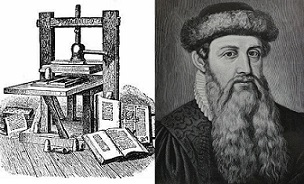
The revolutionary Printing Press was created by Johannes Gutenberg during the 1440's. It allowed a quick and affordable mass-reproduction of literature, news, and ideas, and led to an exponential increase of the general rates of literacy and education.
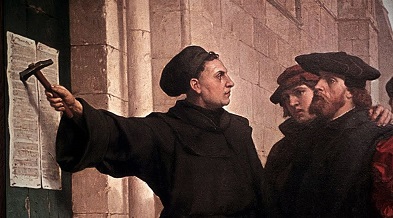
The Printing Press also initiated the dynamic evolution of Christian doctrine and dogma. For the first time, Biblical scriptures were affordable and easily accessible to the general populace. Mass production lead to local vernacular translations of the scriptures, which inspired new and fresh interpretations of the religion. This, in turn, fueled the flames of religious revolution, ushering in the Protestant Reformation, which eventually gave birth to a plethora of differing Christian denominations and schools of thought.

The resurgence of learning also brought about the Scientific Revolution.

Nicolaus Copernicus
(February 19, 1473 – May 24, 1543) Mathematician and astronomer, Copernicus published, in his magnum opus, On the Revolutions of the Heavenly Spheres, a mathematical model and reasoning for a heliocentric model.

Galileo Galilei
(February 15, 1564 – January 8, 1642) Astronomer, mathematician, and engineer, Galileo made several contributions to the science of physics, and made many observational discoveries with his Galilean telescope, including documenting the phases of Venus, charting the surface of our Moon, and locating four moons of Jupiter.

Sir Francis Bacon
(January 22, 1561 – April 9, 1626) Statesman and natural philosopher, Sir Francis Bacon developed and promulgated the scientific method, immeasurably eventuating and influencing the Scientific Revolution.

Sir Robert Boyle
(January 25, 1627 – December 31, 1691) Natural philosopher and scientist, Sir Robert Boyle was an enthusiastic experimentalist and is considered to be the progenitor of modern chemistry. He is best known for formulating Boyle's Law.

Sir Isaac Newton
(December 25, 1642 – March 20, 1727) Natural philosopher, mathematician, and physicist, Sir Isaac Newton laid the ground work for modern physics, developing his theories on the laws of motion, gravity, calculus, and optics.

During this overlapping-era of great change, new worlds, new peoples, and new cultures were unveiled during the Age of Discovery.

Christopher Columbus
(1451 – May 20, 1506) Navigator and explorer, Columbus encountered the Caribbean Islands and South & Central America while attempting to uncover a westward trade-route to Asia. His voyages initiated the European Age of Discovery.

Vasco da Gama, 1st Count of Vidigueira
(1460s – December 24, 1524) Navigator and explorer, Da Gama sailed along the African coast, becoming the first European to reach India by a maritime route.

Sir Ferdinand Magellan
(1480 – April 27, 1521) Navigator and explorer, Magellan named the Pacific Ocean after becoming the first European to encounter the Straight of Magellan. In his attempt to be the first to circumnavigate the world by sea, Magellan was killed by indigenous Filipinos, whereupon Captain Juan Sebastián Elcano took command of the expedition, successfully completing the circumnavigation.

Captain James Cook
(November 7, 1728 – February 14, 1779) Navigator, explorer, and cartographer, Cook was the first European to encounter the Hawaiian Islands, the eastern coast of Australia, and was only 75 miles away from discovering Antarctica before retreating from oceanic ice.

As the Classics were being rediscovered, the embers of the ancient Mystery Traditions were rekindled. It was also from the Renaissance that the earliest existent documents of Freemasonry originate. The Regius Poem (Halliwell Manuscript) is dated between 1390-1450 AD/CE. This manuscript details work duties of Stone Masons, a code of morals, ethics, and conduct, a mythological history of the Craft, and also encourages the pursuit of the Seven Liberal Arts & Sciences; Grammar, Dialect (Logic), Rhetoric, Music, Astronomy, Arithmetic, and Geometry. The Cooke Manuscript, dated to approximately 1450 AD/CE, is said to be the best and most complete example of the Old Charges.

The oldest existent record of a non-Operative Mason being entered into the Masonic Fraternity dates to 1634, with Lord Alexander, Sir Anthony Alexander, and Sir Alexander Strachan being Initiated into the historic Lodge of Edinburgh (Mary's Chapel) No. 1. This Scottish Lodge is the oldest existing Lodge in the world, with documented minutes dated to July 1599. In 1641, the Lodge of Edinburgh documents another historic event:
"1641 when Robert Moray was initiated into the Lodge which had convened at Newcastle; the first non-operative to be admitted on English soil."
Regarding English documentation of non-Operative Masons, the United Grand Lodge of England states:
1646
"Elias Ashmole recorded his initiation with these words:
'October 16, 4.30pm - I was made a freemason at Warrington in Lancashire with Colonel Henry Mainwaring [a Roundhead parliamentarian friend related to his father-in-law] of Karincham in Cheshire. The names of those that were then at the Lodge, Mr Richard Penket Worden, Mr James Collier, Mr Richard Sankey, Henry Littler, John Ellam, Richard Ellam and Hugh Brewer.'
This is the first evidence of the initiation of an English speculative mason - notwithstanding the fact that those present and listed would have certainly been initiated at an earlier date."

During the remainder of the 17th Century, independent Freemasonic Lodges began to form throughout the British Isles and France. The first half of the 18th Century saw the move toward Freemasonic unity, with the Premier Grand Lodge of England and Westminster being founded in 1717, the Grand Lodge of Ireland constituted in 1725, the Premier Grand Lodge of France founded in 1728, the Grand Lodge of Massachusetts in the United States was warranted in 1733, the Grand Lodge of Scotland was constituted in 1736, the Antient Grand Lodge of England formed in 1751, and on December 27, 1813, the "Premier Grand Lodge of England and Westminster" reconciled with the "Antient Grand Lodge of England", to form the United Grand Lodge of England. These Grand Lodge movements led to the spread of Freemasonry throughout Europe and the Americas.
VI. Enlightenment

From the fruits of Classical Antiquity, the seeds of the Renaissance were plucked, and these seeds came to blossom as the Age of Enlightenment. This Age of Reason saw a creative transition of mankind unlike any before. Mankind's pursuit of all endeavors expanded, progressed, and improved by leaps and bounds. In mass, mankind dared beyond the bounds set by monarchy & theocracy, favoring the legitimacy offered by reason and science.
Freemasonry had a directly positive influence on the Enlightenment. Lodges served as safeguarded venues to discuss intellectual concepts, contributing to the work and success of many prominent and influential Freemasonic figures of the Enlightenment, such as:

Montesquieu (Charles-Louis de Secondat)
(January 18, 1689 – February 10, 1755) A revolutionary political philosopher, Montesquieu proposed that the best method to avoid despotism is through the separation of governmental powers. His ideas have went on to influence modern political theory, and have been regarded in many governmental systems of the modern era.
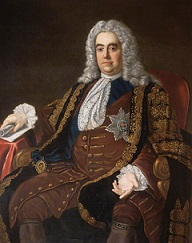
Sir Robert Walpole
(August 26, 1676 – March 18, 1745) Regarded as the first British Prime Minister, Sir Robert Walpole lobbied for peaceful foreign relations and a decrease of domestic taxation.

Alexander Pope
(May 21, 1688 – May 30, 1744) Poet and satirist, Pope remains one of the most widely quoted poets, best known for his works, The Rape of the Lock and The Dunciad.

Voltaire (François-Marie Arouet)
(November 21, 1694 – May 30, 1778) Preeminent figure of the Enlightenment, Voltaire revolutionized the public consciousness. Writer, poet, and philosopher, Voltaire helped to progress the ideas of freedom and justice in all domains; religious, political, and private.

Frederick the Great
(January 24, 1712 – August 17, 1786) King of Prussia, Frederick II was a brilliant military theorist and battle tactician. Like the Italian Medici patrons, Frederick the Great commissioned many architectural and artistic works of the Enlightenment.
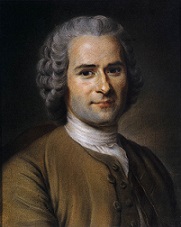
Jean-Jacques Rousseau
(June 28, 1712 – July 2, 1778) Philosophe, writer, and composer, Rousseau's opinions reverberated throughout the Enlightenment, influencing art, music, education, ethics, politics, and even the French Revolution.

Denis Diderot
(October 5, 1713 – July 31, 1784) Writer and critic, Diderot co-founded the monumental Encyclopédie. This Encyclopedia embodied the consciousness of the Enlightenment, with literary contributions from academics, scientists, and priests.

Claude Adrien Helvétius
(February 26, 1715 – December 26, 1771) Philosopher, writer, encyclopedist, and philanthropist, Helvétius is best known for his literary work, De l'esprit (On Mind), which questioned religious-based morality. Helvétius posited that humans are born blank and equally capable, that we are products of our experiences, environment, education, and our pursuits of pleasure.

Jean-Baptiste le Rond d'Alembert
(November 16, 1717 – October 29, 1783) Mathematician, philosopher, and co-editor of Encyclopédie, d'Alembert made several contributions to mathematics, physics, and mechanics, including the d'Alembert Principle, and a new theory of motion.

Gotthold Ephraim Lessing
(January 22, 1729 – February 15, 1781) Writer, dramatist, and philosopher, Lessing insightfully stimulated freedom, in both artistic dramatic form, and in the private affairs of the individual.

Nicolas Marquis de Condorcet
(September 17, 1743 – March 28, 1794) Mathematician and political philosopher, Condorcet was the first to integrate mathematics into political science through his development of the Condorcet Method. As a politician, Condorcet lobbied for equal rights for women and minorities, and was a slavery abolitionist, being a member of the Society of the Friends of the Blacks.
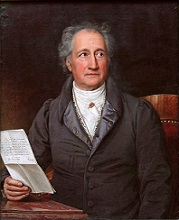
Sir Johann Wolfgang von Goethe
(August 28, 1749 – March 22, 1832) Writer, poet, and scientist, Goethe is considered to be Germany's greatest modern literary figure, and his works have been hailed by prominent public figures around the world.

Wolfgang Amadeus Mozart
(January 27, 1756 – December 5, 1791) Pianist, composer, and musician, Mozart stands as one of the greatest composers of all time. His artful transmutation of emotion into music set new standards throughout all musical genres and types.

Nearly two decades after being made a Freemason, Sir Robert Moray helped to establish the oldest scientific think-tank in current existence; The Royal Society. On November 28, 1660, he attended the pivotal lecture by fellow Freemason, Professor Sir Christopher Wren, now known as the "Committee of 12" meeting at Gresham College. Also in attendance were William Brouncker, 2nd Viscount Brouncker, Alexander Bruce, 2nd Earl of Kincardine, Sir Paul Neile, William Balle, John Wilkins, Robert Boyle, Jonathan Goddard, William Petty, Lawrence Rook, and Abraham Hill. Weekly meetings were held to discuss innovations in the natural sciences and mathematics. Sir Robert Moray lobbied and persuaded King Charles II to grant the group a royal charter, which was signed on July 15, 1662. Two additional charters were granted to extend further privileges to the newly formed "Royal Society of London for Improving Natural Knowledge", listing King Charles II as patron and founder.

The Royal Society helped to establish modern science by creating a platform for the discussion and dissemination of science and experimentation, promoting the scientific method, and pioneering academic peer-review after publishing the first journal dedicated to science in 1665; Philosophical Transactions. The Royal Society hailed the groundbreaking work of Sir Francis Bacon, and Sir Isaac Newton served as the Society's President from 1703-1727. In the pursuit and promotion of scientific knowledge, a vast number of "Fellows of the Royal Society" have been confirmed as being Freemasons by the "Library and Museum of Freemasonry" in London.
VII. Revolution: Novus Ordo Seclorum (New Order of the Ages)
The conscious awakening of mankind, stimulated by the Renaissance, Enlightenment, Scientific Revolution, Age of Discovery, and the Industrial Revolution, gave birth to a spirit of social revolution that soon spread like wildfire throughout the Americas and Europe; Age of Revolution.
Freemasonry, as an institution, did not tackle the tyranny of the Old World Order, but instead, it was by the hand of the free-thinking people who were supported by the positive virtues that Freemasonry espoused, such as Temperance, Fortitude, Prudence, Justice, Faith, Hope, Charity, Brotherly Love, Relief, and Truth.

The 13 Colonies of Great Britain in North America were the first collective society to successfully revolt against the Old World Order. On July 4, 1776, the United States of America formally declared independence from the British Crown and State of Great Britain. Instead of being ruled by Monarchy or Theocracy, the United States of America established a constitutional democratic republic that elected its government officials, established a separation of governmental powers, guaranteed the citizens certain unalienable rights, and saw to the separation of church and state. The Constitution of the United States also allowed for editions and amendments to be made to the law of the land, foreseeing the changing needs of future developments. The integrity of the framework of the United States allowed for the future abolishment of slavery, voting and civil rights for minorities and former-Africans (slave & free), and equality for women.

Many Freemasons can be counted as Founding Fathers of the United States [1] [2] [3].

George Washington
(February 11, 1731 – December 14, 1799) First President of the United States of America, hailed as the; "Father of the Country". Washington, as Commander-in-Chief, successfully led the Continental Army to victory during the American Revolutionary War for independence. He oversaw many conventions of brilliant men, which drafted and implemented the legal framework of the new nation.

Benjamin Franklin
(January 6, 1705 – April 17, 1790) Statesman, diplomat, political philosopher, scientist, and inventor. Franklin is known as the; "First American", and is the only person to sign all four; the "Declaration of Independence", the "Treaty of Alliance, Amity, and Commerce with France", the "Treaty of Peace between England, France, and the United States", and the "U.S. Constitution".

Paul Revere
(December 21, 1734 – May 10, 1818) Patriot, silversmith, and metallurgist, Paul Revere has been immortalized by Henry Wadsworth Longfellow's 1860 poem; "Paul Revere's Ride". On the night of April 18, 1775, along with the efforts of three other riders, Paul Revere helped to warn the colonies of the British Military's advancement into colonial territory.

John Hancock
(January 23, 1737 – October 8, 1793) Statesman and politician, John Hancock was the fourth and thirteen President of the Continental Congress. He is best known for being the first to sign the Declaration of Independence. Due to the flamboyant and oversized style of his signature on the document, his name; "John Hancock", has since become synonymous in the U.S. with the word, "signature" itself.

Prince Hall
(1735-1738 - 1807) Political philosopher, abolitionist, civil rights advocate, Revolutionary War veteran, and founder of Prince Hall Freemasonry. Prince Hall, a freeman, lobbied for the end of slavery, civil rights and education for African-Americans, as well as petitioning the military enlistment of African-Americans during the Revolutionary War.

John Jay
(December 23, 1745 – May 17, 1829) Politician and diplomat, John Jay contributed five essays to The Federalist Papers, served as sixth President of the Continental Congress, served as the first Chief Justice of the U.S., and as Governor, he ratified legislation to end slavery in New York.
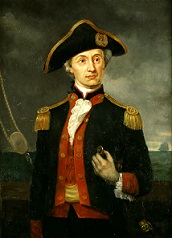
John Paul Jones
(July 6, 1747 – July 18, 1792) Naval commander and military tactician, John Paul Jones won many naval battles against Britain during the Revolutionary War.

James Monroe
(April 28, 1758 – July 4, 1831) Fifth President of the United States and a veteran of the Revolutionary War, Monroe is considered the last president categorized as a "Founding Father". He secured U.S. sovereignty into the future through the Monroe Doctrine, and helped to expand the territory of the U.S. through the Luisiana Purchase, the acquisition of Florida, the Treaty of 1818, and the Adams–Onís Treaty.

Pierre Charles L’Enfant
(August 2, 1754 – June 14, 1825) Architect, engineer, and urban designer, L'Enfant designed the basic layout of Washington D.C.

Gilbert du Motier, Marquis de Lafayette
(September 6, 1757 – May 20, 1834) A leading figure during the French Revolution, Lafayette, a French Nobleman, fought with the Continental Army during the Revolutionary War. He was commissioned as an Honorary Major General, and became a close friend of George Washington.

Edmund Burke
(January 12, 1729 – July 9, 1797) Irish statesman and British politician, Burke lobbied in recognition for the grievances of the American colonialists, and tried to avoid war by issuing a speech reasoning for peace and reconciliation with America.

In addition to the many delegates, representatives, and attendees who were Freemasons, as many as 9 signers of the Declaration of Independence, 9 signers of the Articles of Confederation, 13 signers of the Constitution, and 14 U.S. Presidents can be verified as Freemasons. The Freemasons involved with the founding of the United States did not erect a totalitarian system, but instead, helped to create a Novus Ordo Seclorum (New Order of the Ages) based upon Equality, Life, Liberty, and the pursuit of Happiness for "We the People".
VIII. Order of Illuminati
"Enlightening the Understanding by the Sun of Reason which will dispel the clouds of superstition and of prejudice."
- Adam Weishaupt

The Bavarian Order of Illuminati has been the object of many conspiracy theories, most of which are unfounded. In modern times, the former-Illuminati have been accused of many falsities, ranging from being Atheists, Satanists, Jesuits, Rothschild agents, propagators of evil and chaos, and have even been blamed for the globalist agenda of a New World Order and One World Government.
The former-Illuminati was a product of the Enlightenment, being founded by Dr. Adam Weishaupt in the Bavarian State of modern day Germany.

Adam Weishaupt was born February 6, 1748, in Ingolstadt, Bavaria. His father was Johann Georg Weishaupt, professor of law at the University of Ingolstadt. Johann Georg Weishaupt died suddenly in 1753 when Adam was five years old, whereupon Johann Adam Freiherr von Ickstatt, Adam's godfather, took custody of the boy and raised him to adulthood. Johann Adam von Ickstaff was a professor of law at the University of Ingolstadt, and served as the Director of the University. Dr. Ickstaff helped to reform the University of Ingolstadt according to ideals of the Enlightenment. Adam Weishaupt received a doctorate of law from the University of Ingolstadt in 1768, and in 1772, Dr. Weishaupt became Professor of Canon Law.

In the spirit of Enlightenment ideals and rationalism, Weishaupt founded the Bund der Perfektibilisten (Union of Perfectibilists) on May 1, 1776, two years later adopting the name Illuminatenorden (Order of Illuminati). Notable Members include Franz Anton von Massenhausen, Franz Xaver von Zwack, Jacob Anton von Hertel, Adolph Freiherr Knigge, Johann Wolfgang von Goethe, Christoph Friedrich Nicolai, Ernest II, Duke of Saxe-Gotha-Altenburg, and Karl Theodor Anton Maria von Dalberg.
The former-Illuminati was a secret society intent on liberating and uplifting mankind. The Order focused on reason, morality, and virtue as a path to happiness and enlightened Illumination.
"And what is this general object? The happiness of the human race."
"This is the great object held out by this association; and the means of attaining it is illumination, enlightening the understanding by the sun of reason which will dispel the clouds of superstition and of prejudice. The proficients in this order are therefore justly named the Illuminated. And of all illumination which human reason can give, none is comparable to the discovery of what we are, our nature, our obligations, what happiness we are capable of, and what are the means of attaining it."
- Adam Weishaupt
"Morality is the fruit of Illumination. Duties and rights are reciprocal. Illumination shows us our rights, and Morality follows; that Morality which teaches us to be of age, to be out of wardenship, to be full grown, and to walk without the leading-strings of Priests and Princes."
- Adam Weishaupt
Hoping to spread freedom, liberty, and equality throughout the world, Weishaupt sought to curtail the dominance, subjugation, and repression imposed by the authoritarian monarchs and theocracies of the Old World Order.
"Despotism has robbed them of their liberty. How can the weak obtain protection? Only by union [unity]; but this is rare. Nothing can bring this about but hidden societies. Hidden schools of wisdom are the means which will one day free men from their bonds. These have in all ages been the archives of nature, and the rights of men; and by them shall human nature be raised from her fallen state. Princes and nations shall vanish from the earth. The human race will then become one family, and the world will be the dwelling of Rational Men."
- Adam Weishaupt
In a centuries-old misogynistic world, the former-Illuminati acknowledged the ability and potentiality of women, and discussed admitting women into the Order. The Bavarian Illuminati also conceived of improving the social status of women, and aimed to bring about sexual equality.
"The proposal of Hercules to establish a Minerval school for girls is excellent, but requires much circumspection. Philo and I have long conversed on this subject. We cannot improve the world without improving women, who have such a mighty influence on the men.
Leave them to the scope of their own fancies, and they will soon invent mysteries which will put us to the blush, and create an enthusiasm which we can never equal. They will be our great apostles. Reflect on the respect, nay the awe and terror inspired by the female mystics of antiquity."
- Minos
Dr. Weishaupt envisioned a society where everyone contributes to the greater good by working in a career that best suits their natural skills and talents. The Order of Illuminati did not work toward the interests of the banks or corporations, but was instead ambitious for the empowerment of all.
"To fit man by illumination for active virtue, to engage him to it by the strongest motives, to render the attainment of it easy and certain, by finding employment for every talent, and by placing every talent in it's proper sphere of action, so that all, without feeling any extraordinary effort, and in conjunction with, and in completion of ordinary business, shall urge forward with united powers, the general task. This indeed will be an employment suited to noble natures, grand in it's views, and delightful in it's exercise."
- Adam Weishaupt
Despite popular conspiracy theories, the Bavarian Illuminati was not anti-religious or anti-Christian. Instead, they proclaimed Jesus to be the Grand Master of their esoteric traditions, and sought to dissolve prejudice, superstition, and authoritative doctrine and dogma.

"But I have contrived an explanation which has every advantage; is inviting to Christians of every communion; gradually frees them from all religious prejudices; cultivates the social virtues; and animates them by a great, a feasible, a speedy prospect of universal happiness, in a state of liberty and moral equality, freed from the obstacles which subordination, rank, and riches, continually throw in our way. My explanation is accurate and complete, my means are effectual, and irresistible. Our secret association works in a way that nothing can withstand, and man shall soon be free and happy."
- Adam Weishaupt
"Jesus of Nazareth, the Grand Master of our Order, appeared at a time when the world was in the utmost disorder, and among a people who for ages had groaned under the yolk of bondage. He taught them the lessons of reason. To be more effective, he took the aid of religion, of opinions which were current, and in a very clever manner, he combined his secret doctrines with the popular religion, and with the customs which lay to his hand. In these he wrapped up his lessons, he taught by parables. Never did any prophet lead men so easily and so securely along the road to liberty. He concealed the precious meaning and consequences of his doctrines; but fully disclosed them to a chosen few.
He speaks of a Kingdom of the upright and faithful; His Father's Kingdom, who's children we also are. Let us only take Liberty and Equality as the great aims of his doctrines, and Morality as the way to attain it, and everything in the New Testament will be comprehensible; and Jesus will appear as the Redeemer of slaves. Man has fallen from the condition of Liberty and Equality, the State of Pure Nature. He is under subordination and civil bondage, arising from the vices of man. This is the Fall, and Original Sin. The Kingdom of Grace is that restoration which may be brought about by Illumination and a just Morality. This is the New Birth. When man lives under government, he is fallen, his worth is gone, and his nature tarnished. By subdoing our passions, or limiting their cravings, we may recover a great deal of our original worth, and live in a state of grace. This is the redemption of men, this is accomplished by Morality; and when this is spread over the world, we have the Kingdom of the Just."
- Adam Weishaupt
"We must consider the ruling propensities of every age of the world. At present the cheat and tricks of the priests have roused all men against them, and against Christianity. But, at the same time superstition and fanaticism rule with unlimited domination, and the understanding of man really seems to be going backwards. Our task, therefore, is doubled. We must give such an account of things, that fanatics shall not be alarmed, and that shall, not withstanding, excite a spirit of free inquiry. We must not throw away the good with the bad, the child with the dirty water, but we must make the secret doctrines of Christianity be received as the secrets of genuine Free Masonry.
But farther, we have to deal with the despotism of Princes. This increases every day. But then, the spirit of freedom breathes and sighs in every corner, and, by the assistance of hidden schools of Wisdom, Liberty, and Equality, the imprescribable rights of man, warm and glow in every breast. We must therefore unite these extremes. We proceed in this manner.
Jesus Christ established no new religion; he would only set religion and reason in their ancient rights. For this purpose he would unite men in a common bond. He would fit them for this by spreading a just morality, by enlightening the understanding, and by assisting the mind to shake off all prejudices.
He would teach all men, in the first place, to govern themselves. Rulers would then be needless, and equality and liberty would take place without any revolution, by the natural and gentle operation of reason and expediency. This great teacher allows himself to explain every part of the Bible in conformity to these purposes; and he forbids all wrangling among his scholars, because every man may there find a reasonable application to his peculiar doctrines. I told you, says he, but you could not bear it. Many therefore were called, but few were chosen."
- Adolph Freiherr Knigge

Another popular theory postulates that the former-Illuminati was an extension of the Jesuit's Society of Jesus. A closer look into the context of historic details will easily dispel this rumor.
A common misconception alleges that the very name; “Illuminati,” points to a connection with the Jesuit Society of Jesus. Unlike the misinformed conspiracies that point to a 15th and 16th Century origin of the term, “Illuminati,” we actually first encounter the term during the 3rd Century. Mani, the Persian Prophet of Manichaeism, was known as; the “Supreme Illuminator” and the “Apostle of Light”. Mani called his new belief system; the “Religion of Light”, and his followers refer to his imprisonment and death as; the “Passion of the Illuminator”.
During the 16th Century, a Spanish mystic named, Sister Maria de Santo Domingo, a.k.a.; “Le Beata de Piedrahita”, began to articulate her mystical experiences of the Mother Mary and Jesus. She declared herself the; “Bride of Christ”, and went about propagating her mystical belief system of chastity, poverty, and ecstatic trance. Others, including Pedro Ruiz de Alcaraz, Isabel de la Cruz, and Magdalena de la Cruz, also expressed similar experiences and teachings. The practitioners of this disjointed movement became known in Spain as; the “Alumbrados” (Illuminated Ones).
One day while street preaching, Society of Jesus founder; Ignatius of Loyola, was approached by Alumbrados women. In a fully public display, the Alumbrados fell before Ignatius and began to convulse, undulate, and consummate ecstatic trance. This event aroused the Inquisition, and Ignatius was detained for questioning. Ignatius firmly denied any affiliation with the Alumbrados, and was cleared of any wrongdoing or involvement. Furthermore, Ignatius remained a skeptical critic of the Alumbrados mystics, and even opposed the living saint and Alumbrados devotee; Magdalena de la Cruz. Ignatius of Loyola was never an Alumbrados, and never referred to the Society of Jesus as Alumbrados nor Illuminati, instead, using the names; “Amigos en El Senor” (Friends in the Lord), and “Company of Jesus”. Ignatius never conformed to the teachings of the Alumbrados, instead, he cultivated spiritual mysticism by Simple Contemplation (contemplative prayer).
Adam Weishaupt’s organization does not stem from, nor pay homage or tribute to Manichaeism, the Alumbrados, or the Jesuits. With proper research, it is plainly evident that all of these groups have different goals, different beliefs, and different methodologies. Of further relevance, Weishaupt’s organization was initially named; Bund der Perfektibilisten (Union of Perfectibilists). Believing that; “Perfectiblists” was not a suitable name, Weishaupt sought group consensus to change the name to; ”Order of the Bee”, which was rejected by fellow members. After two years, the Perfectibilists finally changed their name to; Illuminatenorden (Order of Illuminati).
Although Adam Weishaupt had received his formal education from Jesuit schools and universities, he never joined the Society of Jesus. Many people throughout history, and many more in our current time, have attended Jesuit sponsored schools and universities without ever becoming a member of their Society or endorsing their ideology.
During the 18th Century, the papacy and various monarchs began a campaign to suppress the Society of Jesus, for the fear of the growth of Jesuit power and the spread of their influence. As this campaign entered Bavarian politics, it had a direct consequence for the University of Ingolstadt. The Professorship of Canon Law had traditionally been held by members of the Society of Jesus, whereupon their ostracization left this position vacant. Weishaupt's godfather, Johann Adam Freiherr von Ickstatt, was a modest critic of the Jesuits, no doubt influencing young Weishaupt's views of the Society. To the dismay of the entrenched Jesuits, Adam Weishaupt ascended to the professorship, ending the Jesuits control of Ingolstadt Canon Law. This "changing of the guard" stirred the Jesuits into envy and disdain of Adam Weishaupt.
Furthermore, prominent Jesuit priest, Augustin Barruel, dedicated an entire volume of writing to attack, discredit, and expose Adam Weishaupt and the Order of Illuminati; Memoirs Illustrating the History of Jacobinism; Part III. The Antisocial Conspiracy. Barruel's exposé, along with John Robison's publication, Proofs of a Conspiracy, went on to lay the fallacious groundwork of our fictitious Illuminati folklore.
Moreover, Weishaupt used his academic, social, and Illuminati associates to collect information about the Jesuits, which he then used to attack the outlawed Society by revealing their activities to the authorities. At the behest of Weishaupt, in 1781, Adolph Freiherr Knigge wrote and published several articles and pamphlets exposing and criticizing the Jesuits. Despite popular conspiracy theories claiming otherwise, the Order of Illuminati has always been at-odds with the Society of Jesus.
Even through our age of readily accessible facts and information, the fanciful myth continues to persist, that, the former-Illuminati had fully infiltrated and influenced the Freemasonry of today.
Almost a year after the inception of the Bund der Perfektibilisten (Union of Perfectibilists), which was later renamed to Illuminatenorden (Order of the Illuminati), Adam Weishaupt joined the Freemasonic Lodge "Prudence", of the Rite of Strict Observance. Weishaupt became a Freemason in a scheme to counterfeit and incorporate its system and secrets into his own Bund der Perfektibilisten. Dissatisfied and disillusioned with the French and Scottish traditions that he found, Adam Weishaupt and Adolph Freiherr Knigge sought to amalgamate their Illuminati degrees with the three degrees of "Blue Lodge" Freemasonry, and then propagate their Illuminati Mysteries as higher degrees of Freemasonry.
This goal of cultivating a new Freemasonic-Illuminati resulted in the usurpation of Lodge "Theodore of the Good Council", which was warranted on March 21, 1779, by the Grand Lodge of Prussia, called the Royal York of Friendship. In June of 1782, the Illuminati-controlled, Lodge Theodore of the Good Council, declared independence from both the Royal York of Friendship Grand Lodge and the Rite of Strict Observance. After this move, Illuminati Lodge Theodore then set itself up as a Mother Grand Lodge, and by 1783 presided over seven Lodges. By 1784, there were 650 confirmed members of the Illuminati, with Weishaupt claiming as many as 2,500 members.
"We must allow the underlings to imagine (but without telling them the truth) that we direct all the Free Mason lodges, and even all others, and that the greatest Monarchs are under our guidance, which indeed is here and there the case."
- Adam Weishaupt
Contrary to popular belief, the Order of Illuminati was only able to hold sway over Freemasonic Lodges in its vicinity, and never established itself outside of Germany. By the time Lodge Theodore became an Illuminati stronghold, the traditions of Freemasonry had already been established by the Grand Lodge Movements of England, Ireland, France, Scotland, and the United States. Instead of accepting the incomplete and invented Illuminati precepts as "higher degree Freemasonry," the authentic Grand Lodges and Grand Orients accepted appendant bodies such as the Holy Royal Arch, the Order of Mark Master Masons, the Knights Templar, and the Scottish Rite.
Internal dissent and organized propaganda attacks led to the decline and ruin of the Bavarian Illuminati. In a 1784 power-struggle, the Illuminati's top recruiter and ritual creator, Adolph Freiherr Knigge, remitted his Illuminati membership with the blessing of Weishaupt, consequently, extinguishing much of the creativity, enthusiasm, and vigor of the Order. The Jesuits, Rosicrucians, and other religious clerics continued their onslaught of propaganda publications and rumors against the Illuminati.
The very real threat that the Illuminati posed to the repressive Old World Order, coupled with the untrue accusations of Illuminati malevolence, resulted in Charles Theodore, Prince-Elector of Bavaria issuing an edit on March 2, 1785, outlawing all secret societies, including the Illuminati. Membership plummeted, and the Illuminati-influenced Lodges either closed or reorganized according to more traditional and authentic Freemasonic Obediences, dropping all of the pseudo-traditions of Weishaupt and Knigge.
Exiled, Weishaupt received asylum and assistance from Illuminist, Ernest II, Duke of Saxe-Gotha-Altenburg in 1787. Dethroned and defeated, Adam Weishaupt lived out the rest of his incapacitated days in Gotha, writing several treatises on Illuminism and Illuminati apologetics. The Order of Illuminati perished with Adam Weishaupt.
Adam Weishaupt's literary works have only become easily accessible in our modern era, and some books have recently been translated into English for the first time. A reading of this original source material, and critics agree, will lay to rest the misconceptions of a malevolent Order of Illuminati.
To discover some of the actual teachings of the former-Illuminati, please enjoy Amelia Gill's English translation of Adam Weishaupt's Diogenes’ Lamp, or an Examination of Our Present Day Morality and Enlightenment.
7 pages! A big one commeth in.
Waiting, waiting, patiently waiting.
P
ETA Wow, it is up to 14 pages!
Lol. Now 19 pages and he has 3 flags. ATS at its finest.
Oh hell. Have a star just for the effort man. Don't care what you say (until I read it) but effort should sometimes be its own reward.
Just finished page 7. Now I am reading faster than you are posting. Well done, a great read.
IX. Light

The semantics, symbolism, and imagery of Light, has become obscure. Often in our popular culture, references to Light, Enlightenment, Illuminism, and Illumination are taken as wicked, Satanic, and Luciferian. This erroneous opinion harkens to a sad and unfortunate mistranslation of Isaiah 14:12
"How art thou fallen from heaven, O Lucifer, son of the morning! How art thou cut down to the ground, which didst weaken the nations!"
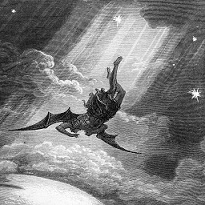
Lucifer is Latin for, "Light-Bringing/Bearer", and as a Venusian epithet; "Morning Star".
In this Biblical instance, "Lucifer, son of the morning", is an outdated and inaccurate translation, originating from St. Jerome's Latin Vulgate Bible. The myth and imagery of a Satanic Lucifer was then perpetuated by the King James Version of the Bible, and the fictional epic poems; Dante Alighieri's Divine Comedy and John Milton's Paradise Lost.
In place of "Lucifer", the original Hebrew actually reads;
"Heylel (הֵילֵ֣ל) Ben (בֶּן־) Shachar (שָׁ֑חַר)"
Which literally means;
"Heylel, the Son of Shachar".
The word, "Heylel" (הֵילֵ֣ל), is rather enigmatic. According to several Concordances, Heylel is defined as: "a shining one" and "star of the morning".
According to "The Ancient Hebrew Lexicon of the Bible", by Jeff A. Benner, the roots for "Heylel" center around the concepts; "Behold", "Look toward", and "Shining".

Literally, we can say (Heyl-El Ben Shachar):
"Behold the Shining One of El/God, Son of Shachar"
Shachar is synonymous with the specific light of dawn, not light in general.
The Hebrew words for "Light" are typically derived from the root "Nun-Hey-Resh" (N-H-R), such as "Neharah", "Nehir", and "Nahar". This is similar to Arabic's word for light, being, "Nur".
Shachar is a Canaanite deity representative of the "Morning Star," which is Venus on the eastern horizon before sunrise.
Now we have;
"Heyl-El, the Son of the Morning Star"
Deduced;
"Heyl-El, Son of Venus"
"Behold the Shining One of El, Son of Venus"
There is no Satan or Lucifer here. Red-flagged mistranslation! It's overdo that we cast aside the Lucifer connection to Satan or any Fallen Angel.
According to Biblical studies, Light is synonymous with God, holiness, truth, life, goodness, morality, and salvation.

In 1 John 1:5, it is written;
• "God is Light; in Him there is no darkness at all."
In Revelation 22:16, Jesus is mentioned to be Lucifer, a.k.a., The Morning Star;
• "I Jesus have sent mine angel to testify unto you these things in the churches. I am the root and the offspring of David, and the bright (lampros) and morning (prōinos) star (astēr)."
But that's ok, because we've already established that "Lucifer" holds absolutely no connotation to anything wicked.
In Matthew 5:16, Jesus mentions his followers as Bearers of Light and is glorifying of Light, advising;
• "Let your Light shine before others, that they may see your good deeds and glorify your Father in Heaven."
In the 1st and 9th Chapters of John, Jesus is described as the Light of the world;
• "In him was life, and that life was the Light of all mankind."
• "While I am in the world, I am the Light of the world."
According to Chapter 24 Verse 35 of the Qur'an, Allah is the Light of Heaven;
"Allah is the Light of the heavens and the earth. The example of His Light is like a niche within which is a lamp, the lamp is within glass, the glass as if it were a pearly [white] star lit from [the oil of] a blessed olive tree, neither of the east nor of the west, whose oil would almost glow even if untouched by fire. Light upon Light. Allah guides to His Light whom He wills. And Allah presents examples for the people, and Allah is Knowing of all things."
Various Hindu belief systems articulate Light as Brahman (Ultimate Reality), Atman (Soul), divinity, life, sattva, purity, goodness, knowledge, and wisdom.
Different Buddhist traditions express Light [2] as enlightenment, knowledge, wisdom, truth, goodness, the Buddha's teachings, bliss, samadhi, nirvana, and as the Amida Buddha.
The Dictionary of Symbolism, compiled by the University of Michigan Fantasy and Science Fiction, reiterates the above symbolic qualities of Light.
The terms "Lucifer" and "Satan" are often used in occult writings according to their literal etymological meanings in a symbolical, allegorical, and esoteric sense;
Lucifer: (Light, Knowledge, Mind, Consciousness, Higher Self)
Satan: (Adversary, Barbarism, Ignorance, Insensible, Lower Self)
This usually represents a dualistic view of psychological and universal archetypes.

There is also the beautiful astronomical allegory of Venus bearing the Light of the Sun (Life, Knowledge, Safety) which dispels the darkness (death, ignorance, fear) of night.
X. New World Order
The Novus Ordo Seclorum, based upon Freedom, Liberty, Equality, and Justice, has been subverted by the agenda of the New World Order. This agenda from without, arose within the United States through the central banks.
Instead of muddying the waters with my own opinion, I will allow others more qualified to articulate the battle between the Novus Ordo Seclorum and the New World Order.
• Bank of North America (1781-1791)
"But if in the pursuit of the means we should unfortunately stumble again on unfunded paper money or any similar species of fraud, we shall assuredly give a fatal stab to our national credit in its infancy. Paper money will invariably operate in the body of politics as spirit liquors on the human body. They prey on the vitals and ultimately destroy them. Paper money has had the effect in your state that it will ever have, to ruin commerce, oppress the honest, and open the door to every species of fraud and injustice."
- George Washington to Jabez Bowen, January 9, 1787
“All the perplexities, confusion and distress in America arise not from defects in the Constitution or Confederation, not from a want of honor or virtue, so much as from downright ignorance of the nature of coin, credit and circulation.”
- John Adams, 1787 Constitutional Convention
• First Bank of the United States (1791-1811)
“I wish it were possible to obtain a single amendment to our Constitution. I would be willing to depend on that alone for the reduction of the administration of our government to the genuine principles of its Constitution; I mean an additional article, taking from the federal government the power of borrowing.”
- Thomas Jefferson to John Taylor, November 26, 1798
"Bank-paper must be suppressed, and the circulating medium must be restored to the nation to whom it belongs."
- Thomas Jefferson to John Wayles Eppes, September 11, 1813
• Second Bank of the United States (1816-1836)
"And I sincerely believe, with you, that banking establishments are more dangerous than standing armies; and that the principle of spending money to be paid by posterity, under the name of funding, is but swindling futurity on a large scale."
- Thomas Jefferson to John Taylor, May 28, 1816
"And to preserve their independence, we must not let our rulers load us with perpetual debt. We must make our election between economy and liberty, or profusion and servitude. If we run into such debts, as that we must be taxed in our meat and in our drink, in our necessaries and our comforts, in our labors and our amusements, for our callings and our creeds, as the people of England are, our people, like them, must come to labor sixteen hours in the twenty-four, give the earnings of fifteen of these to the government for their debts and daily expenses; and the sixteenth being insufficient to afford us bread, we must live, as they now do, on oatmeal and potatoes; have no time to think, no means of calling the mismanagers to account; but be glad to obtain subsistence by hiring ourselves to rivet their chains on the necks of our fellow-sufferers."
- Thomas Jefferson to Samuel Kercheval, July 12, 1816
"Banks have done more injury to the religion, morality, tranquility, prosperity, and even wealth of the nation than they can have done or ever will do good."
- John Adams to John Taylor, March 12, 1819
"The bank is trying to kill me, but I will kill it!"
- Andrew Jackson to Martin Van Buren, July 8, 1832
"It is maintained by some that the bank is a means of executing the constitutional power “to coin money and regulate the value thereof.” Congress have established a mint to coin money and passed laws to regulate the value thereof. The money so coined, with its value so regulated, and such foreign coins as Congress may adopt are the only currency known to the Constitution. But if they have other power to regulate the currency, it was conferred to be exercised by themselves, and not to be transferred to a corporation. If the bank be established for that purpose, with a charter unalterable without its consent, Congress have parted with their power for a term of years, during which the Constitution is a dead letter. It is neither necessary nor proper to transfer its legislative power to such a bank, and therefore unconstitutional."
- Andrew Jackson, Veto Message, July 10, 1832
"The chief duty of the National Government in connection with the currency of the country is to coin money and declare its value. Grave doubts have been entertained whether Congress is authorized by the Constitution to make any form of paper money legal tender. The present issue of United States notes has been sustained by the necessities of war; but such paper should depend for its value and currency upon its convenience in use and its prompt redemption in coin at the will of the holder, and not upon its compulsory circulation. These notes are not money, but promises to pay money. If the holders demand it, the promise should be kept."
- James A. Garfield, Inaugural Address, March 14, 1881
"However it has come about, it is more important still that the control of credit also has become dangerously centralized. It is the mere truth to say that the financial resources of the country are not at the command of those who do not submit to the direction and domination of small groups of capitalists who wish to keep the economic development of the country under their own eye and guidance.
The great monopoly in this country is the monopoly of big credits. So long as that exists, our old variety and freedom and individual energy of development are out of the question. A great industrial nation is controlled by its system of credit. Our system of credit is privately concentrated.
The growth of the nation, therefore, and all our activities are in the hands of a few men who, even if their action be honest and intended for the public interest, are necessarily concentrated upon the great undertakings in which their own money is involved and who necessarily, by very reason of their own limitations, chill and check and destroy genuine economic freedom.
This is the greatest question of all, and to this statesmen must address themselves with an earnest determination to serve the long future and the true liberties of men."
- Woodrow Wilson, "The New Freedom: A Call For the Emancipation of the Generous Energies of a People"
Jekyll Island Club, 1910
The Secret Meeting That Launched the Federal Reserve: Echoes
• Federal Reserve System (1913-Present)
Criticism of the Federal Reserve
• Bank for International Settlements, 1930
• World Bank, 1944
• International Monetary Fund, 1945

Despite being held as spurious, I opine this unverified Thomas Jefferson quote to precisely surmise the perpetrators of the New World Order:
"If the American people ever allow private banks to control the issue of their currency, first by inflation, then by deflation, the banks and corporations that will grow up around them will deprive the people of all property until their children wake up homeless on the continent their Fathers conquered."
- Thomas Jefferson, (not authenticated)
Top 10 Think Tanks in Washington DC
The 50 Most Influential Think Tanks in the United States
Carnegie Endowment for International Peace, 1910
Brookings Institution, 1916
Council on Foreign Relations, 1921
RAND Corporation, 1948
Center for Strategic and International Studies, 1962
Trilateral Commission, 1973
Heritage Foundation, 1973
Cato Institute, 1974
Peterson Institute for International Economics, 1981
Open Society Foundations, 1993
Center for American Progress, 2003
Media Conglomerates
Concentration of Media Ownership
"This conjunction of an immense military establishment and a large arms industry is new in the American experience. The total influence, economic, political, even spiritual, is felt in every city, every statehouse, every office of the federal government. We recognize the imperative need for this development. Yet we must not fail to comprehend its grave implications. Our toil, resources and livelihood are all involved; so is the very structure of our society. In the councils of government, we must guard against the acquisition of unwarranted influence, whether sought or unsought, by the military–industrial complex. The potential for the disastrous rise of misplaced power exists, and will persist. We must never let the weight of this combination endanger our liberties or democratic processes. We should take nothing for granted. Only an alert and knowledgeable citizenry can compel the proper meshing of the huge industrial and military machinery of defense with our peaceful methods and goals so that security and liberty may prosper together."
- Dwight D. Eisenhower, Farewell Address, January 17, 1961
Military Industrial Congressional Complex (MICC)
"For we are opposed around the world by a monolithic and ruthless conspiracy that relies on covert means for expanding its sphere of influence, on infiltration instead of invasion, on subversion instead of elections, on intimidation instead of free choice, on guerrillas by night instead of armies by day. It is a system which has conscripted vast human and material resources into the building of a tightly knit, highly efficient machine that combines military, diplomatic, intelligence, economic, scientific and political operations.
Its preparations are concealed, not published. Its mistakes are buried not headlined. Its dissenters are silenced, not praised. No expenditure is questioned, no rumor is printed, no secret is revealed."
- John F. Kennedy, The President and the Press, April 27, 1961
Although there are many people working toward good and honest intentions, certain individuals, groups, and corporations that are associated with the aforementioned Think Tanks and Financial Institutions comprise many of the public figures pursuing the globalist agenda for a New World Order and One World Government.
It is a grave error to refer to the N.W.O. movement as being synonymous with the former-Illuminati. This One World Government is clearly at-odds with the philosophy of Adam Weishaupt, and by their methodology, are clearly removed from Illuminism, Enlightenment, and/or Illumination.
Many fraternities, societies, and organizations may use similar symbols, but these groups have widely varying goals, focuses, and different interpretations and beliefs about those common symbols. Figures of the N.W.O. movement may belong to secretive fraternities and societies, but this does not mean that they are the long-extinct Order of Illuminati.
Freemasonry's close affiliation with the early development of the United States and the European movements that advocated Freedom, Liberty, and Democracy, has led many to assume that Freemasonry has never relinquished its influence over matters foreign and domestic. Freemasonry has, therefore, been blamed for the many wars and travesties of our modern era. The truth of the matter is absolutely contrary to this supposition.
Freemasonic membership has been suffering a decline in recent years, and has bolstered less members of prominent significance than in previous times. Either in correlation or by coincidence, as Freemasonry slides into cultural irrelevance, the world at large appears to be sliding away from traditional morals & virtues, and further into chaos and decay.
It has been alleged that the New World Order and One World Government is being spearheaded, not by regular Freemasons, but by "higher-up" Freemasons. This amateur allegation has not been substantiated, nor has a viable theory been presented to explain who or what these "higher-up Freemasons" are.
There is no international centralized authority in Regular Freemasonry. Countries and States are partitioned between the Jurisdictions of sovereign Grand Lodges who are in mutual recognition of one another. Each Jurisdiction is administered by its Grand Lodge, which is presided over by a Grand Master, assisted by his Officers. All subordinate Lodges within each Jurisdiction fall under the authority of the Grand Lodge. Subordinate Lodges are presided over by the Master of the Lodge, assisted by the Officers of the Lodge.
The 3rd Degree of Master Mason is the highest degree in Craft / Blue Lodge Freemasonry. Appendant Bodies offer additional degrees, however, 3rd Degree Master Mason remains the senior degree in Regular Freemasonry. Members of Appendant Bodies, that have been conferred with additional degrees, hold no additional authority or command over 3rd Degree Master Masons or the Lodges.
The most well known Appendant Bodies are the Scottish Rite and York Rite. It is falsely believed that a 32nd or 33rd Degree Scottish Rite Freemason, or a York Rite Knights Templar is granted overt or clandestine power over "lower level" Freemasons. Prestige and pride do come with Appendant degrees and chapters, but these Scottish and York Rite Freemasons are still held as equals to 3rd Degree Master Masons in the bodies of Grand Lodges and their Regular Lodges.
The most senior members of Craft Freemasonry include Master Masons, Officers, Lodge Masters, and Grand Masters. The highest authority in the Scottish Rite is the Supreme Council, while the highest authority in the York Rite includes the Grand Chapter, Grand Council, and Grand Commandery.
Below, are many links exhibiting these "higher-up" Freemasons. If any evil N.W.O. Globalist is a "higher-up Freemason", then surely they would be mentioned somewhere in these membership lists. If the evil N.W.O. Globalists are even more elevated in rank than these lists, then surely they would have left a trail in these "lower levels" on their ascent to the "higher levels".
"Higher-up Freemasons" ushering in a malevolent New World Order is a fabricated myth.
A Few Famous Freemasons
Famous Freemasons (A-L)
Famous Freemasons (M-Z)
Grand Masters of the United Grand Lodge of England
General Grand Chapter of Royal Arch Masons
General Grand Council of Cryptic Masons
The Grand Encampment of Knights Templar of the United States of America
Scottish Rite Southern Jurisdiction of the United States of America
Scottish Rite Northern Jurisdiction of the United States of America
The Supreme Council for Thirty-Third and Last Degree of the Ancient and Accepted Scottish Rite for Scotland and the Dominions and Dependencies of the British Crown
Succession of Members of the Supreme Council
Succession of Sovereign Grand Commanders
Officers of Grand Lodge of the District of Columbia
Grand Masters of the Grand Lodge of Virginia
Officers of the Grand Lodge of Massachusetts
Grand Masters of the Grand Lodge of the State of New York
Grand Masters of the Grand Lodge of Maryland
Grand Masters of the Grand Lodge of Ohio
Officers of the Grand Lodge of New Hampshire
Grand Masters of the Grand Lodge of Connecticut
Grand Masters of the Grand Lodge of Rhode Island
Grand Masters of the Grand Lodge of Pennsylvania
Grand Masters of the Grand Lodge of Delaware
XI. TL;DR
Too Long; Didn't Read
The Old World Order was a ruling system based upon the cooperation between kings and priests to subjugate the people. Through the separate efforts of the Knights Templars with their chivalric code and endorsement of the Magna Carta,... Freemasonry's influence during the Enlightenment and Age of Revolution,... and the former-Illuminati's propagation of philosophic Illuminism,... the Old World Order was brought down and the Novus Ordo Seclorum (New Order of the Ages) was established. This New Order of the Ages based upon Freedom, Liberty, Equality, and Justice was short-lived, as the globalist tentacles of the central banking system's congressional-military-industrial-complex began to slowly erect the framework of the New World Order.
• Old World Order
Kings and Priesthoods rule the people through force and superstition
• Novus Ordo Seclorum (New Order of the Ages)
Knights Templars, Freemasons, & Illuminati helped to spread Freedom, Liberty, Democracy, Separation of Church & State, Reason, and Science
• New World Order
Globalization Movement of the central banks and their private corporations attempting to rule and monopolize mankind and the earth through restrictive laws and centralized rule
*Drops mic and walks away*
-
Parker Solar Probe is about to Kiss the Sun
Space Exploration: 31 minutes ago -
Drones On Live Beach Cam New Jersey.
Aliens and UFOs: 2 hours ago -
Christmas Dinner ??
Food and Cooking: 2 hours ago -
Merry Christmas !!
General Chit Chat: 5 hours ago
-
This is an interesting picture. Do we actually pick our leaders?
Politicians & People: 17 hours ago, 11 flags -
Merry Christmas !!
General Chit Chat: 5 hours ago, 10 flags -
Christmas Dinner ??
Food and Cooking: 2 hours ago, 3 flags -
Drones On Live Beach Cam New Jersey.
Aliens and UFOs: 2 hours ago, 3 flags -
Parker Solar Probe is about to Kiss the Sun
Space Exploration: 31 minutes ago, 1 flags
-
Trump says ownership of Greenland 'is an absolute necessity'
Other Current Events • 34 • : xuenchen -
Parker Solar Probe is about to Kiss the Sun
Space Exploration • 2 • : RMFX1 -
Merry Christmas !!
General Chit Chat • 12 • : Encia22 -
Post A Funny (T&C Friendly) Pic Part IV: The LOL awakens!
General Chit Chat • 7949 • : underpass61 -
Mood Music Part VI
Music • 3759 • : lilzazz -
Drones On Live Beach Cam New Jersey.
Aliens and UFOs • 1 • : WeMustCare -
UnitedHealthcare CEO Brian Thompson shot dead in Midtown Manhattan, masked gunman at large
Other Current Events • 176 • : WeMustCare -
Spiritual Solstice
Short Stories • 17 • : SprocketUK -
This is an interesting picture. Do we actually pick our leaders?
Politicians & People • 10 • : montybd -
Christmas Dinner ??
Food and Cooking • 1 • : Naftalin
